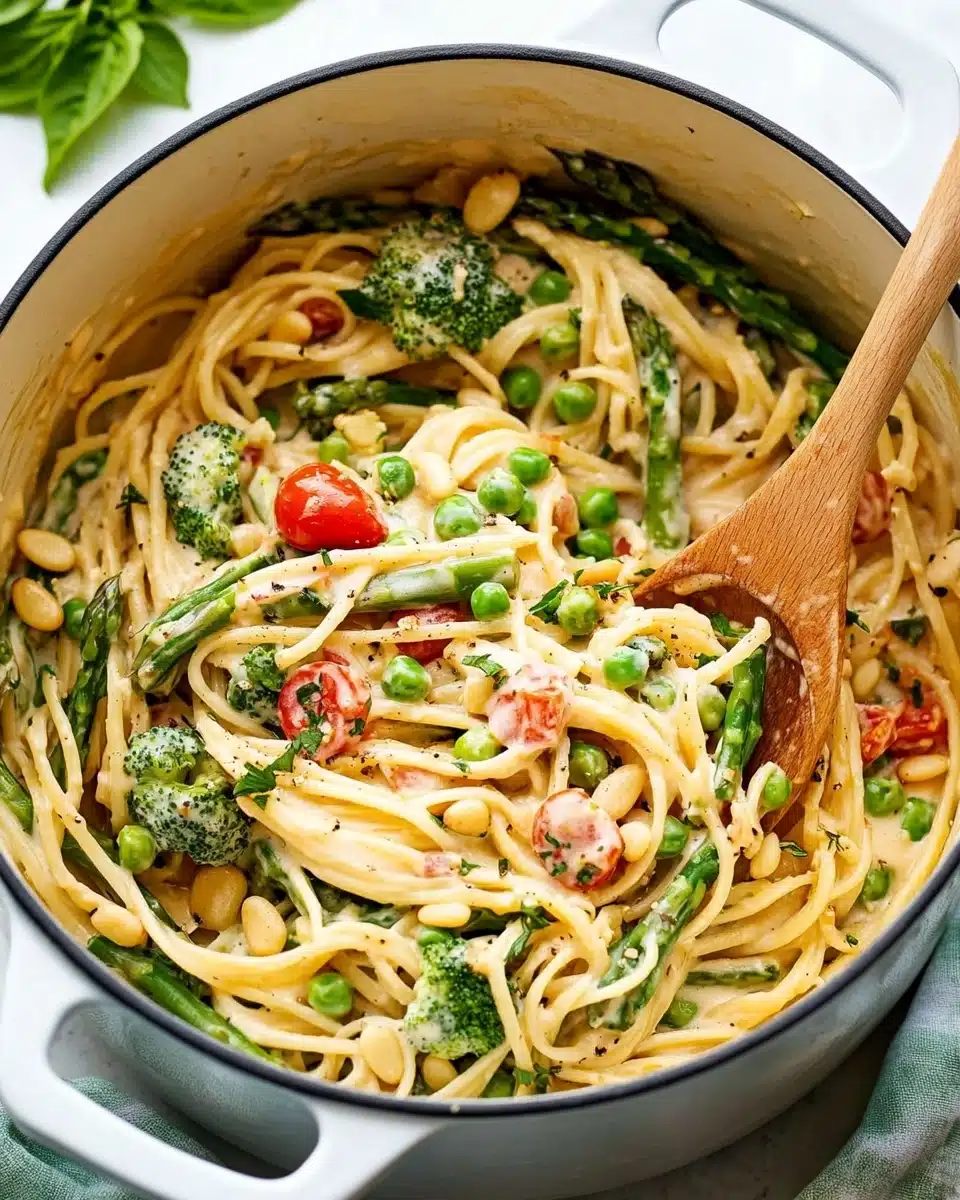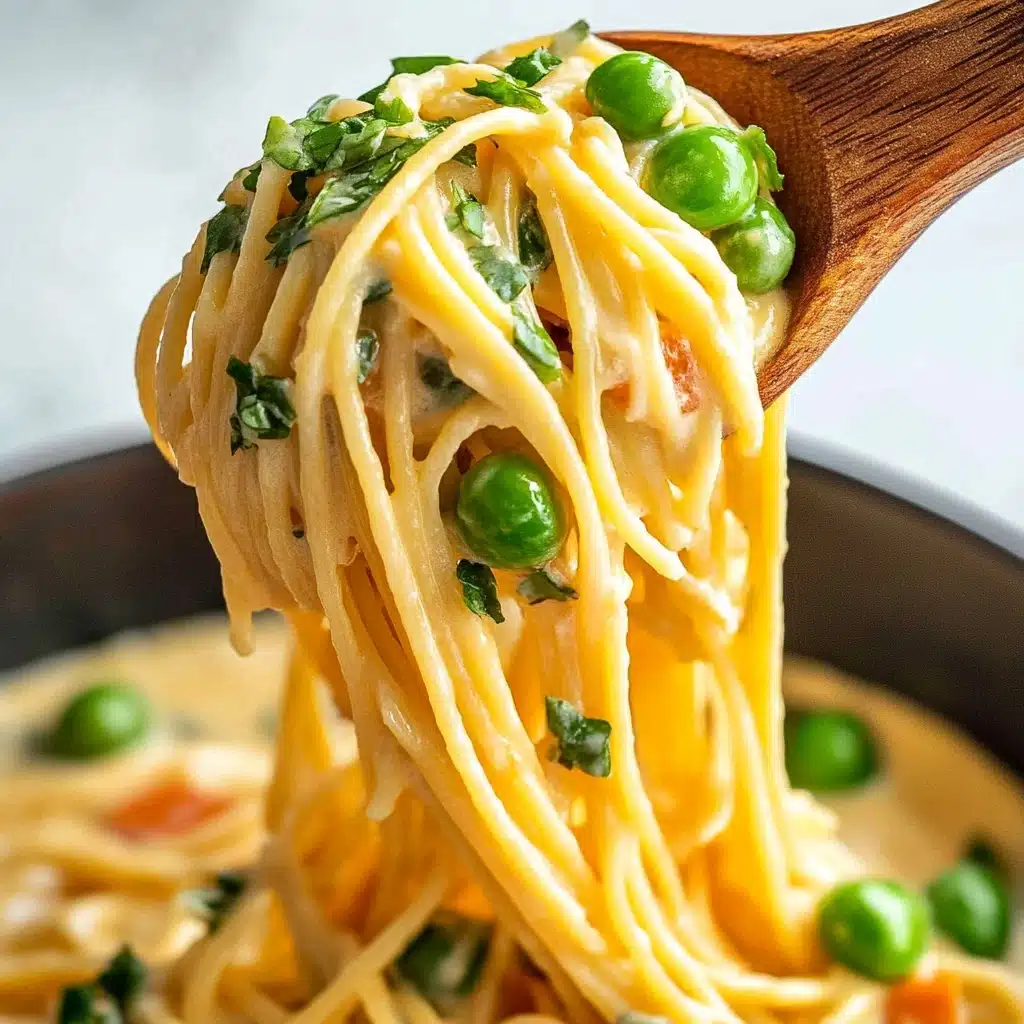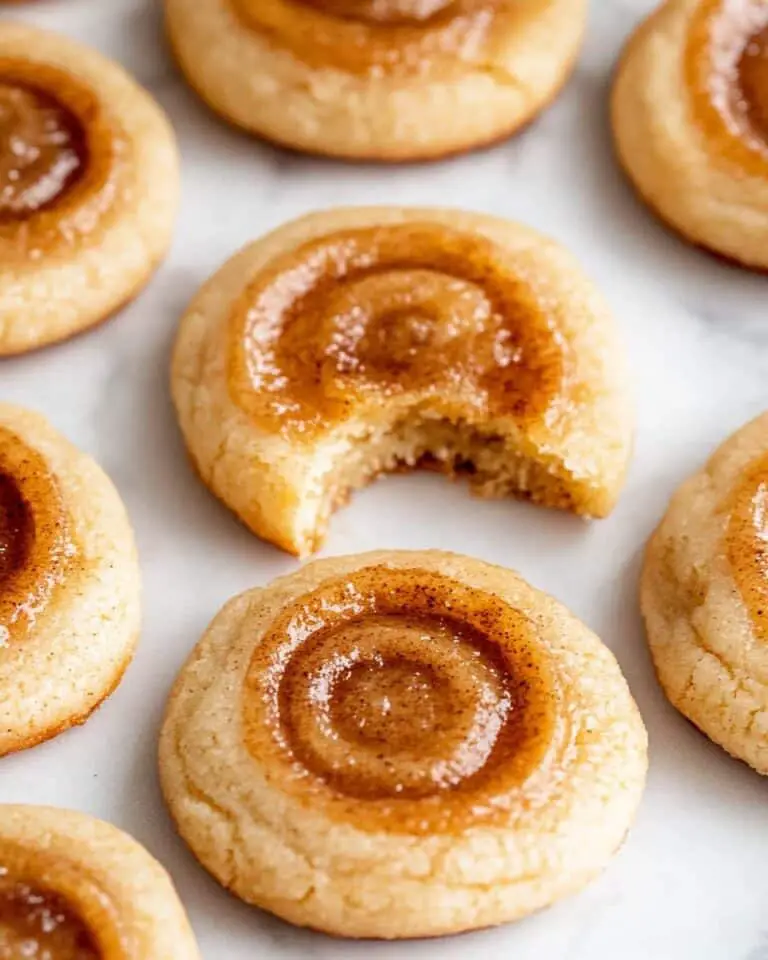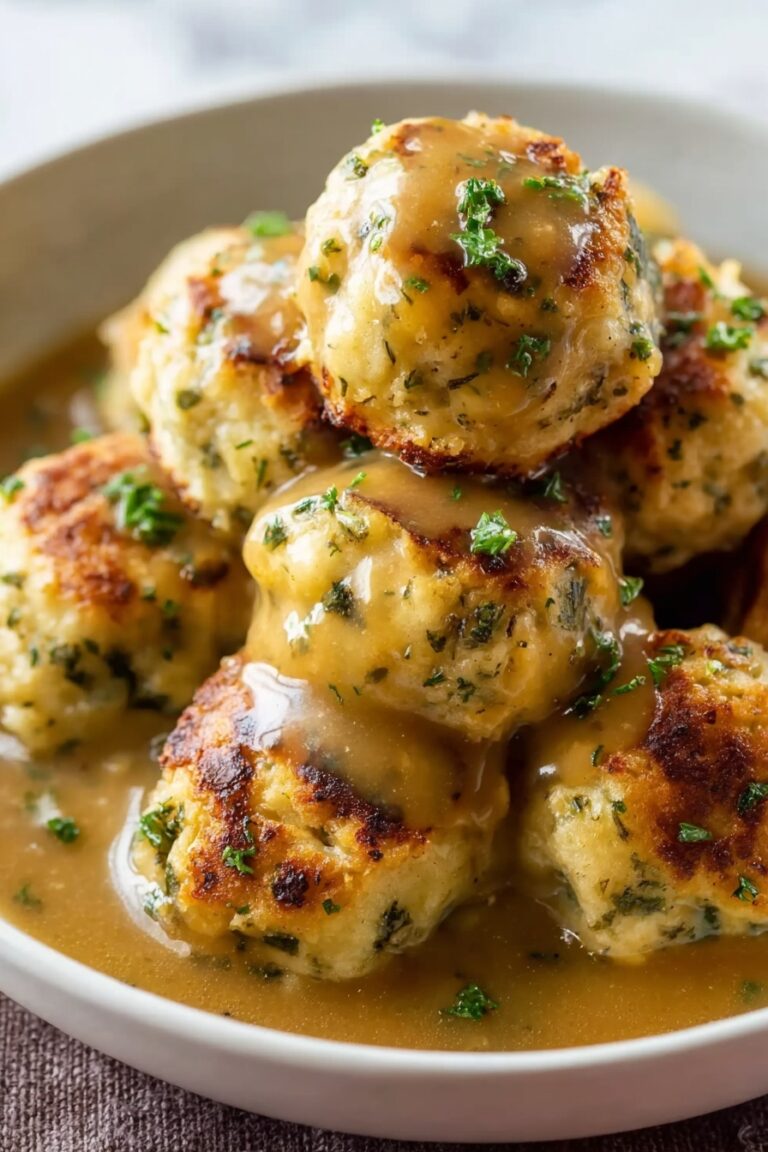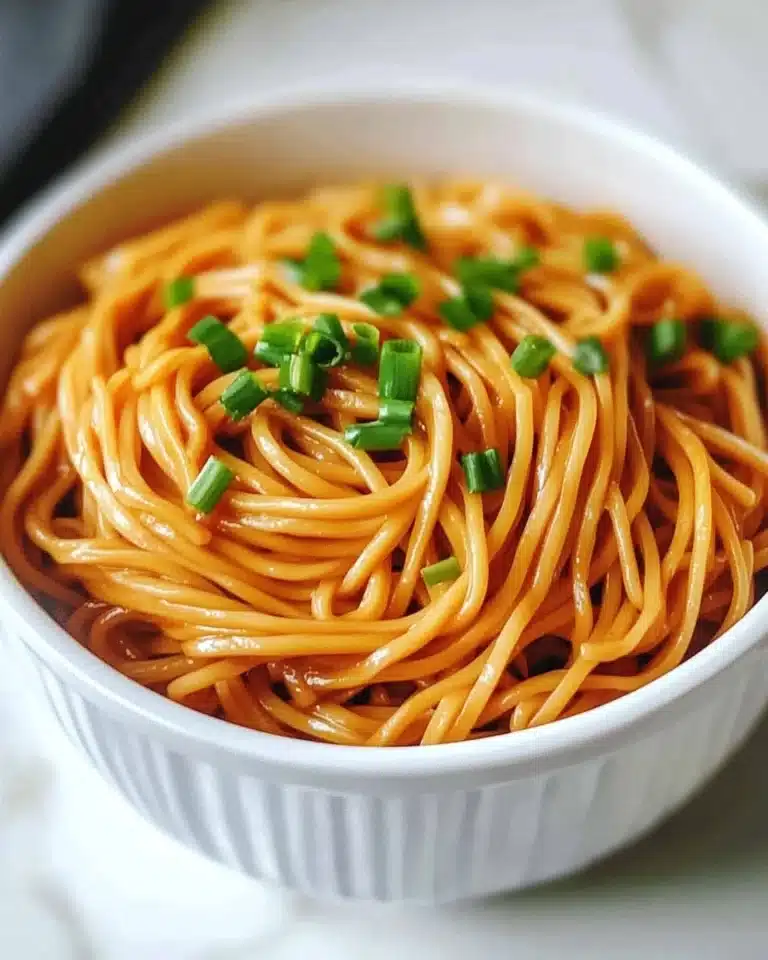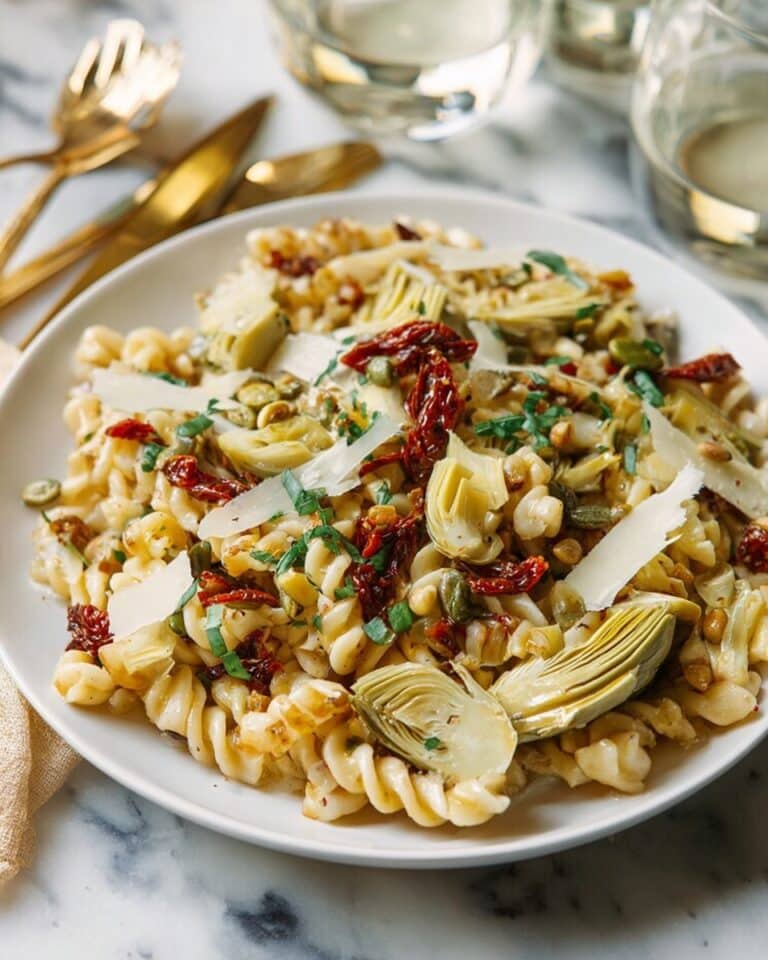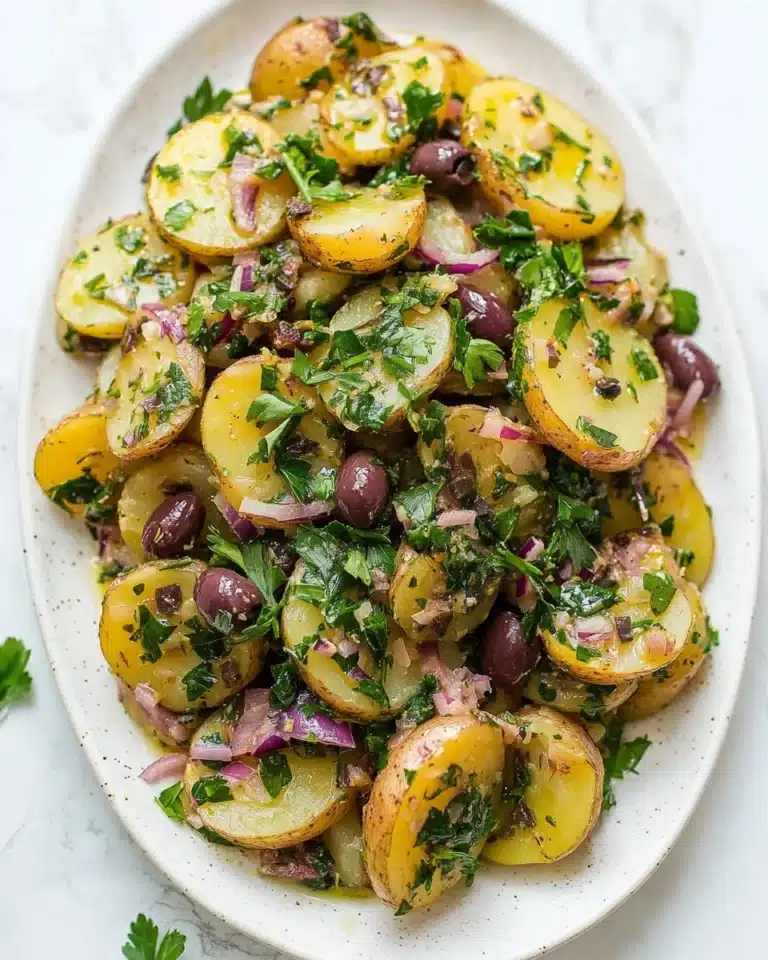If you dream of twirling your fork through silky pasta ribbons mingled with a riot of tender spring vegetables and a lusciously creamy sauce, Pasta Primavera is about to become your new obsession. This classic, colorful dish is all about celebrating the fresh flavors of the season, and I can’t wait for you to taste the magic!
Why You’ll Love This Recipe
- Restaurant-Worthy Creaminess: Indulge in a rich, silky sauce that clings beautifully to every bite—just like a chef would make.
- A Celebration of Fresh Veggies: Every forkful is bright with tender, seasonal green vegetables and sweet tomatoes, making it taste like pure springtime.
- Easy Weeknight Magic: With straightforward steps and simple ingredients, Pasta Primavera becomes a show-stopper you can whip up any night.
- Totally Customizable: This recipe welcomes whatever vegetables you love or have on hand—there’s no wrong way to Primavera!
Ingredients You’ll Need
Gathering your ingredients for Pasta Primavera is honestly where the fun begins. Each one brings something unique to the party, whether it’s irresistible creaminess, vibrant color, crunch, or that deep, savory undertone you crave. Here’s what you’ll want to have ready before you start cooking.
- Linguine or fettuccine (300g): The ideal canvas for soaking up that luscious sauce—long, flat noodles hold everything beautifully.
- White mushrooms (150g): Sliced and sautéed until golden, they add earthiness plus a hearty, “meaty” bite.
- Zucchini (1/2 large): Cut into rounds for a sweet, mild flavor and gorgeous green color.
- Broccolini (1 bunch): Brings a gentle bite and a pretty pop of green—don’t forget to use both florets and stems!
- Snow peas (1 1/2 cups): These stay crisp-tender and a little sweet when sliced on the diagonal.
- Green asparagus (1 bunch): Snappy, fresh spears make this dish undeniably springy.
- Green peas (1 cup): Defrosted from frozen, they add cheerful bursts of sweetness.
- Cherry tomatoes (10): Halved, their juicy, tangy pop balances the richness of the sauce.
- Garlic (2 cloves): Finely minced for an aromatic, savory backbone.
- Unsalted butter (5 tbsp): Forms the base of the creamy sauce for a velvety texture.
- Heavy cream (1 cup): The heart of the sauce, making it beautifully rich and smooth.
- Parmigiano Reggiano (1/2 cup): Adds deep, nutty flavor—grating it fresh makes a world of difference!
- Extra virgin olive oil (3 tbsp): For sautéing, lending a fruity, aromatic note.
- Pasta cooking water (1/3 cup): The secret to saucy, glossy noodles—don’t forget to reserve some!
- Cooking or kosher salt and black pepper: For seasoning and bringing out the flavors.
- Fresh basil leaves (1/2 cup): Finely sliced, these offer a sweet, herbal finish—fabulously fragrant!
- Pine nuts (2 tbsp, toasted): A golden, crunchy garnish that elevates every bite.
Variations
Pasta Primavera is the ultimate flexible dinner—just swap, add, or skip whatever suits your mood, pantry, or dietary needs. Creativity is encouraged and substitutions are highly welcome!
- Lighter Primavera: Skip the butter in the cream sauce and reduce oil; sauté your veggies in a bit of butter or even broth for a lighter but still flavorful pasta bowl.
- Different Pasta Shapes: Feel free to use penne, rigatoni, or whatever short pasta you have; the sauce is delicious with any shape.
- Swap the Veggies: Embrace the seasons—try bell peppers, spinach, artichoke hearts, or whatever is freshest in your market.
- Dairy-Free Version: Substitute with your favorite vegan cream and non-dairy parmesan for a still-decadent but completely plant-based dish.
- Add a Protein: Grilled chicken, sautéed shrimp, or crispy tofu are all dreamy stirred in at the last minute if you want a protein boost.
How to Make Pasta Primavera
Step 1: Prep and Cut the Vegetables
Start by prepping all your veggies so everything is ready to toss in at just the right moment. Trim and cut the broccolini, snow peas, and asparagus as directed, and halve your cherry tomatoes. This step might seem simple, but having vegetables cut into slightly different shapes and sizes gives your Pasta Primavera tons of texture and, let’s be honest, it just looks gorgeous in the bowl!
Step 2: Make the Cream Sauce
In a medium saucepan, melt the butter over medium-high heat. Add the cream and Parmigiano Reggiano and stir until the cheese is fully melted and the sauce gently simmers. It should be thick and silky, ready to coat every noodle. Take it off the heat and set aside while you cook your pasta and veggies, and do yourself a favor—sneak a taste!
Step 3: Cook the Pasta
Bring a big pot of salted water to a boil and cook your pasta of choice according to package instructions, but take it out one minute early—it’ll finish cooking with the sauce. Ladle out about a cup of pasta water just before draining (it’s liquid gold for perfect sauce consistency). Set pasta aside and keep it warm.
Step 4: Sauté the Vegetables
Heat half the olive oil in a large skillet or sauté pan over high heat. First, cook the mushrooms until golden, then set them aside. Add the remaining oil and toss in the broccolini, asparagus, and snow peas for a couple of minutes—keep them vibrant! Add zucchini, tomatoes, green peas, garlic, salt, and black pepper. Cook a few minutes more, then return the golden mushrooms, give everything a quick toss, and take the pan off the heat.
Step 5: Toss Everything Together
In your now-empty pasta pot, combine the drained pasta with all those sautéed veggies and the silky cream sauce. Add 1/3 cup of reserved pasta water, then toss everything together over medium heat for a minute or two. You’re looking for the sauce to thicken and coat every noodle. If it feels too thick, just splash in a little more pasta water until it’s dreamy.
Step 6: Finish with Basil and Pine Nuts
Toss in the fresh basil so it gently wilts and perfumes the whole pot. Divide your Pasta Primavera among plates or bowls, and top with toasted pine nuts right before serving for a subtle crunch and that golden finish.
Pro Tips for Making Pasta Primavera
- The Pasta Water Trick: Make sure to reserve a cup of pasta water before draining—the starch in it gives your cream sauce that gorgeous, clingy, restaurant-quality finish.
- Don’t Overcook the Veggies: Aim for bright colors and crisp-tender vegetables; they’ll keep their flavor, texture, and those irresistible pops of green and red.
- Freshly Grate Your Cheese: Store-bought pre-grated parmesan just won’t melt smoothly—use a microplane for fluffy, melt-in sauce perfection.
- Toasting Pine Nuts: Toast your pine nuts in a dry skillet until golden and fragrant—this adds a magical nutty aroma you’ll swoon over.
How to Serve Pasta Primavera
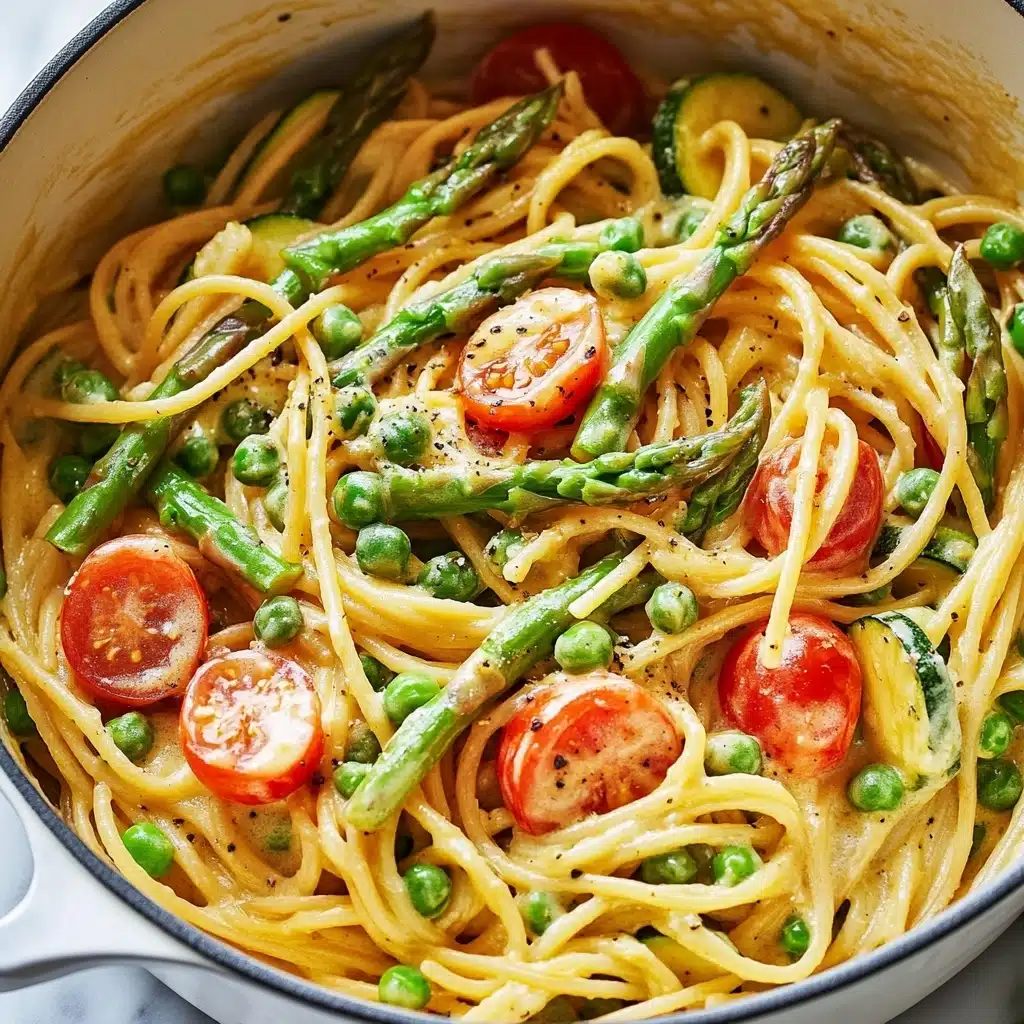
Garnishes
A generous shower of freshly grated Parmigiano Reggiano is classic, but you can also add a sprinkle of extra basil or a flourish of lemon zest for a burst of color and a little zing. Those toasted pine nuts add elegance and crunch—don’t skip them!
Side Dishes
Pasta Primavera is vibrant enough to be the star, but it loves a little company. Try serving with warm, crusty bread to mop up any extra sauce, or a crisp green salad with a light vinaigrette. For something more substantial, a simple grilled protein on the side works perfectly.
Creative Ways to Present
For a fun twist, serve Primavera family-style in a large, shallow platter piled high—those rainbow veggies look stunning. Or, portion into individual bowls and top each with a swirl of basil oil or extra pine nuts at the table for a bit of showmanship.
Make Ahead and Storage
Storing Leftovers
Store any leftover Pasta Primavera in an airtight container in the fridge for up to three days. The flavors meld beautifully, and it makes a delightfully satisfying lunch the next day.
Freezing
While you can technically freeze Pasta Primavera, the cream sauce and tender veggies tend to lose their best textures in the freezer. If you must freeze, let cool completely and wrap tightly for up to two months, but for freshest flavor, enjoy within a couple days of making.
Reheating
Gently reheat leftovers in a skillet with a splash of water or cream to loosen up the sauce. Warm over low heat, stirring frequently, just until heated through—this keeps your pasta tender and your veggies vibrant.
FAQs
-
Can I use other vegetables in Pasta Primavera?
Absolutely! Pasta Primavera was made for flexibility. Feel free to substitute with any seasonal veggies you love, such as bell peppers, spinach, or squash. Just aim for a nice mix of colors and textures, and adjust the cooking times so each stays crisp-tender.
-
Is Pasta Primavera better with cream or tomato-based sauce?
This classic version is all about that rich, creamy sauce, which gently coats the pasta and veggies. If you prefer a lighter, brighter dish, you can swap for a tomato-based sauce or even dress simply with olive oil and herbs. Both are delicious—it’s all personal preference!
-
Can I make Pasta Primavera vegan?
Yes! Simply swap the heavy cream with your favorite plant-based alternative, and use a vegan parmesan-style cheese or nutritional yeast for that savory note. Replace butter with olive oil or vegan butter, and you’ll have a completely plant-based dinner bursting with flavor.
-
What’s the best pasta shape for Pasta Primavera?
Long, flat pasta shapes like linguine or fettuccine are traditional since they cradle the veggies and sauce perfectly. However, short shapes like penne or rigatoni also work wonderfully, ensuring every bite is loaded with color and flavor.
Final Thoughts
If there was ever a dish that captures pure joy in a bowl, it’s got to be Pasta Primavera. I hope you give this recipe a try soon—don’t be afraid to make it your own, and definitely don’t forget to invite someone you love to the table. Happy cooking, and enjoy every vibrant, creamy bite!
Print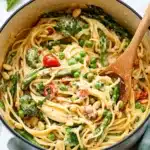
Pasta Primavera Recipe
- Prep Time: 15 minutes
- Cook Time: 20 minutes
- Total Time: 35 minutes
- Yield: 4 servings
- Category: Stovetop
- Method: Stovetop
Description
Indulge in a creamy and flavorful Pasta Primavera loaded with a variety of fresh spring vegetables and a luscious cream sauce. This restaurant-style dish is a true crowd-pleaser and perfect for a special dinner at home.
Ingredients
Pasta:
- 300g / 10 oz linguine (or fettucine)
Vegetables:
- 150g white mushrooms, sliced
- 1/2 large zucchini, rounds
- 1 bunch broccolini
- 1 1/2 cup snow peas
- 1 bunch green asparagus
- 1 cup green peas
- 10 cherry tomatoes, halved
- 2 garlic cloves, minced
Cream Sauce:
- 5 tbsp unsalted butter
- 1 cup thickened/heavy cream
- 1/2 cup Parmigiano reggiano, grated
Cooking:
- 3 tbsp extra virgin olive oil
- 1/3 cup pasta cooking water
- 1 tsp salt
- 1/4 tsp black pepper
- 1/2 cup fresh basil leaves, sliced
- 2 tbsp pinenuts, toasted
Instructions
- Cut vegetables: Prepare vegetables as instructed.
- Cream Sauce: Melt butter, add cream and Parmigiano reggiano, and set aside.
- Pasta: Cook pasta and reserve pasta water.
- Cook: Saute mushrooms, then cook remaining vegetables. Combine with sauce and pasta.
- Toss: Mix pasta, vegetables, sauce, and pasta water until thickened.
- Basil & Pine Nuts: Add basil, then serve topped with pine nuts.
Notes
- This dish is indulgent but can be lightened by adjusting ingredients.
- Substitute vegetables or cream based on preference.
- Use fresh basil or lemon juice for a different flavor profile.
- Starchy pasta water is key for a thick sauce.
- To toast pine nuts, heat in a skillet until fragrant.
Nutrition
- Serving Size: 1 serving
- Calories: 874 cal
- Sugar: 11g
- Sodium: 825mg
- Fat: 56g
- Saturated Fat: 27g
- Unsaturated Fat: 24g
- Trans Fat: 1g
- Carbohydrates: 74g
- Fiber: 7g
- Protein: 23g
- Cholesterol: 116mg

